Armory - a lane that does not exist
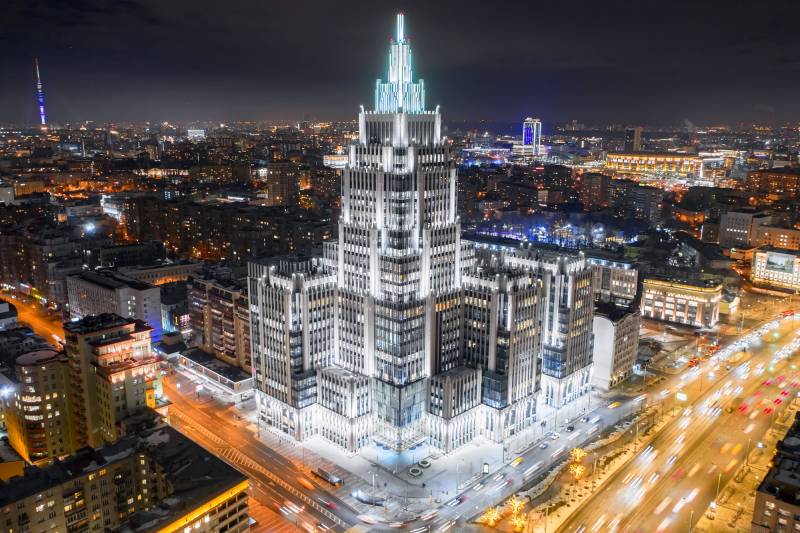
Architecture - pride and warning
Gunsmith lane - many people walk and drive along it, but not everyone even knows about its existence. If today you ask pictures about Oruzheyny Lane in search engines, then just such photos of the newest Sber-building - the Oruzheyny business center will immediately pop up.
In my opinion, this is quite an outright fake for Stalin's skyscrapers. Business Center "Arms", I do not argue, is impressive and literally soars, more precisely, it reigns over the Miussy and Samotyok, the old Moscow districts, as if there was nothing else here and there is none.
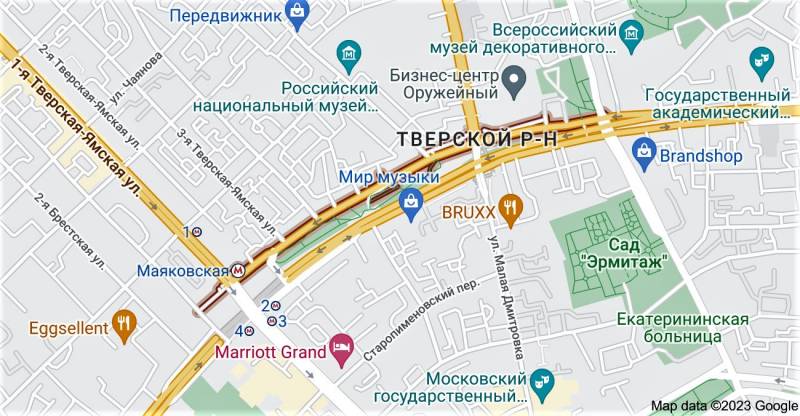
Perhaps it really was worth pushing into the shade both the worn box of the main department of the traffic police and the unconvincing monuments to Mikhail Kalashnikov and Iosif Kobzon. But house 41 was also crushed by the beautiful apartment building of Lobozev, to the creation of which Ernst-Richard Nirnsee himself had a hand.
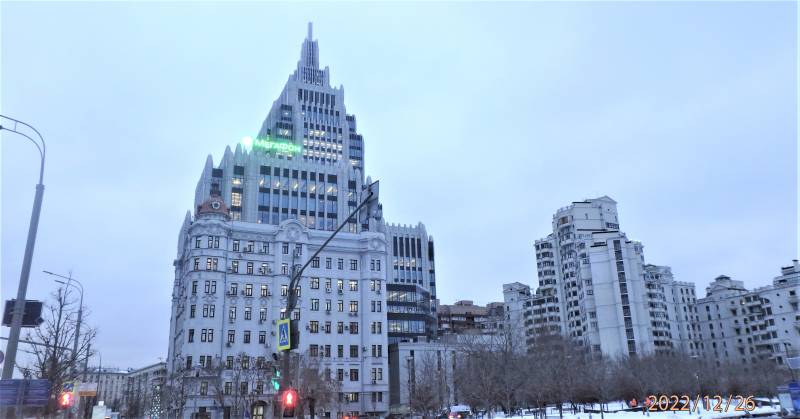
The architect Nirnsee is the author of the so-called "cloud-cutters" with a height of more than 8 floors, and among them is the famous first Moscow skyscraper in Bolshoy Gnezdnikovsky Lane. Lobozev's house was also once listed as a skyscraper, but from the photo above you can hardly believe it.
The city, like everything else, will digest this architectural horror, but it cannot stand any comparison with either the magnificent Moscow seven - seven sisters, or with Kalinin Avenue. There, the height of the buildings was never an end in itself, they were surrounded by space, which is nothing to dream of at the modern Armory.
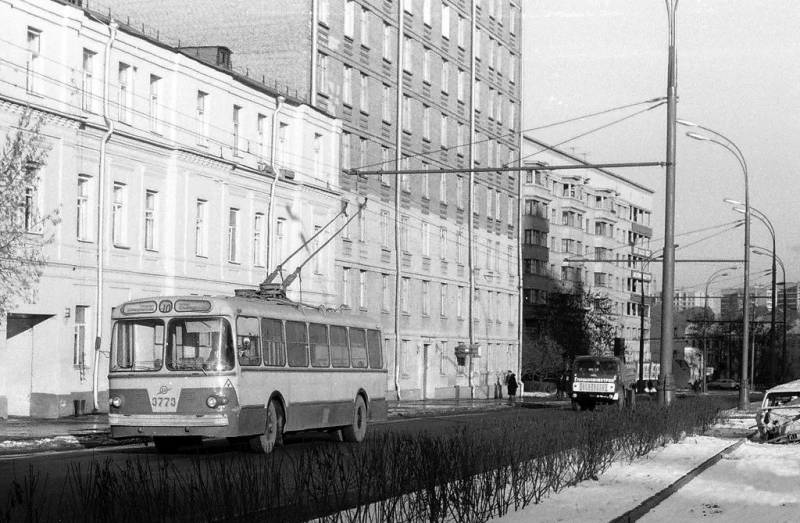
However, right there - be so kind, Sadovoye with its eternal stream of cars. On Oruzheyny there is another pearl from architects - later than the Lobozev house, and, of course, built earlier than the Arms business center. This is a residential building in the “none” style, marked on old photos with trolleybuses.

But the apartments in it are quite good, and most importantly, the giant house has a cozy and green courtyard that has not been turned into a parking lot (pictured). Almost everything else on the surviving left side of the lane has been preserved in one way or another, much has been reconstructed, not reverently, but quite acceptable.
From the history of Miuss
For a while, Arms Lane, which received its name, like Rifles, (Alleys of Moscow. Short and "peaceful" Rifle), from another settlement of masters from the Armory, was even listed as a street. She led to Karetnaya Square, the second name of which is Coal. It testifies to the delivery of fuel closer to the city center from Brest, then Aleksandrovsky station, now Belorussky.
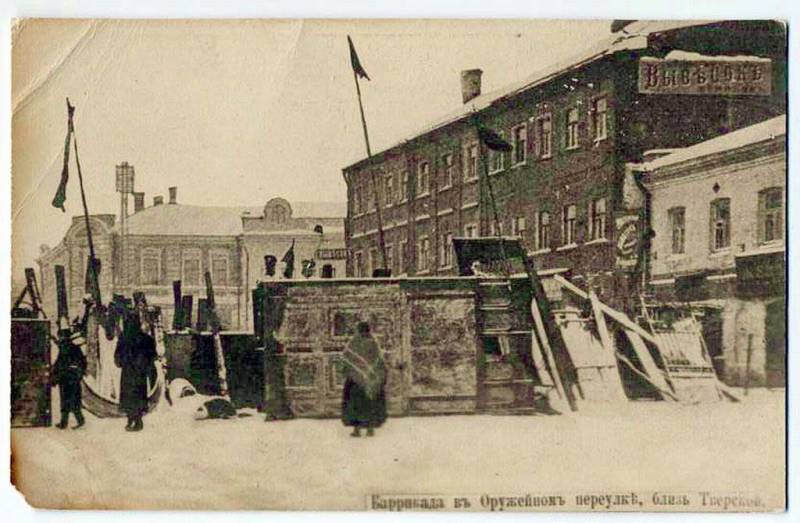
The street was infrastructural, and therefore - working, and in the revolutionary days of 1905 it was blocked by barricades (see photo). It was necessary to block the path of the Life Guards to the Semyonov Regiment, which arrived on a punitive mission from St. Petersburg and advanced towards the Miussy and Gruzinsky Wall in order to reach the flank and rear of the insurgent Presnya.
By that time, Boris Pasternak had been born in house number 3 on Arms, but instead of a memorial museum, the house received an attic, which did not decorate it at all and, most likely, will be demolished. Further on, on the corner with Fadeeva Street, the so-called NKVD house with an expensive clinic and other tenants on the ground floor has been brought into relative order.
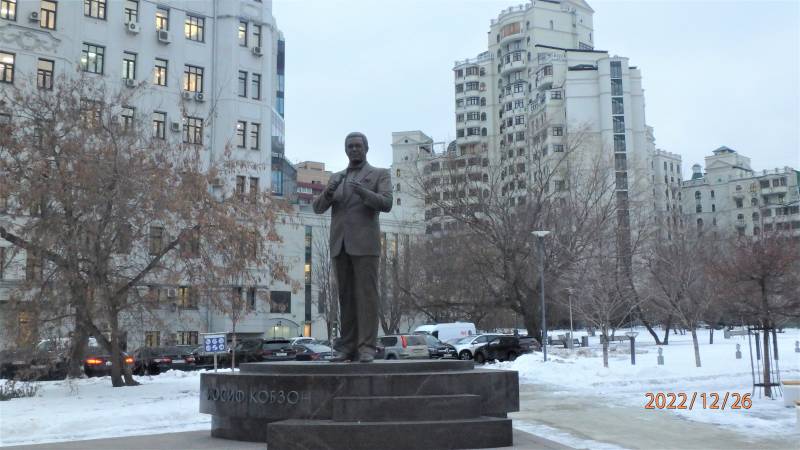
Today, the lane ends with a square with the already mentioned monument to Joseph Kobzon, where there used to be low-rise buildings. And among other things - a house on the corner of Krasnoproletarskaya Street, about which a little lower. This street, before being renamed in honor of the Krasny Proletarian printing house, was Pimenovskaya, after the temple of the same name.
Even earlier, when settlements and villages were located immediately behind the Garden Ring, it was just a continuation of Karetny Ryad. Now, the corner with Sadovoy is adorned with an office building, once reconstructed and restored according to an avant-garde project of the 30s for the Caterpillar company. Today, VimpelCom has settled there.
On the contrary, even before the Caterpillars, in the early 1980s, a house was demolished, which was not very well filmed in the last shots of Mikhail Kozakov’s iconic Pokrovsky Gates. The modest building at the corner of Arms and Krasnoproletarskaya had nothing to do with the mansion on Nashchokinsky Lane, turned into a communal apartment, where the heroes of the film settled.
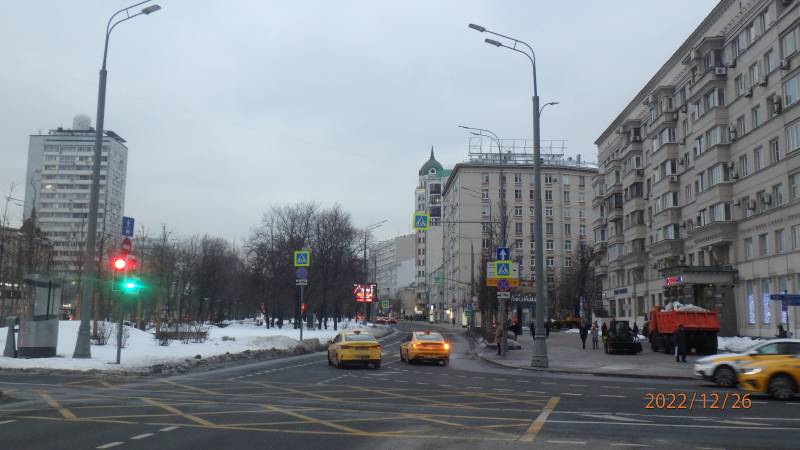
Understudy Sadovo-Triumfalnaya
In the distant past, when there were still gardens on the Garden Ring, Armory Lane lived, as it were, on its own. At the very first expansion of Sadovoye, he almost disappeared into it, and when the Mayakovsky tunnel was pierced under Gorky Street and Triumfalnaya Square, he completely turned into a reversal understudy of the ring.
The houses on the Armory remained in fact only on one of the sides - the odd left. The only one on the right, where the alley begins, with Il-Patio and the Interfax agency, is only listed under the second number along the alley, but it is perceived exactly as a house on Tverskaya.
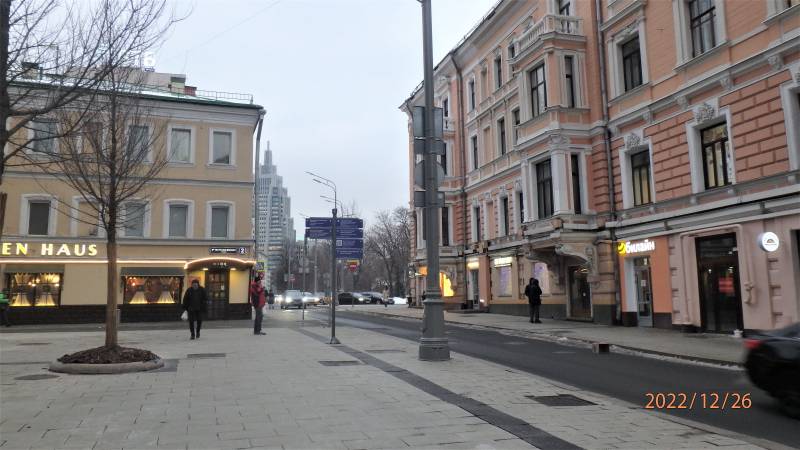
A fairly large square between Armory and Sadovo-Triumfalnaya was well renovated with obligatory Mayor's tiles on the paths and even preserved trees and shrubs. However, it is inhabited mainly by dog walkers, walkers and homeless people, since you can get to it only by crossing the highway, which is always full of cars.
The lane begins with a set of good establishments that change here with unenviable regularity and become more and more expensive every year, while clearly losing popularity. Previously, after press conferences at Interfax, troops from the writing and filming brethren always landed here. Now the press is a rarity, and the "paratroopers" are not visible.
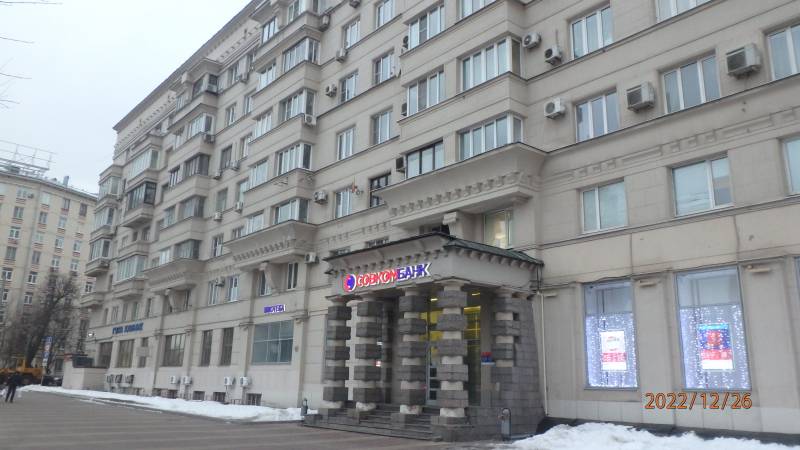
Silent courtyards
Not to say that cultural life has ever been in full swing at the Armory - even as an understudy for Sadovoy, it is considered quiet. In addition, the neighborhood with Triumfalnaya Square, the Tchaikovsky Hall, theaters and the Peking restaurant also affects. Only the Museum of Music on Fadeeva Street, a stone's throw from the Armory, does not stop its active work, where excursions are supplemented by regular concerts of a very different plan.
But the courtyards in the depths of the Armory with traditional Moscow gates have somehow become quiet these days. Half of the passages today are blocked by fences and barriers, and they are used exclusively by locals who are sure that they will not wander into a dead end or into a yard-well, like in St. Petersburg.
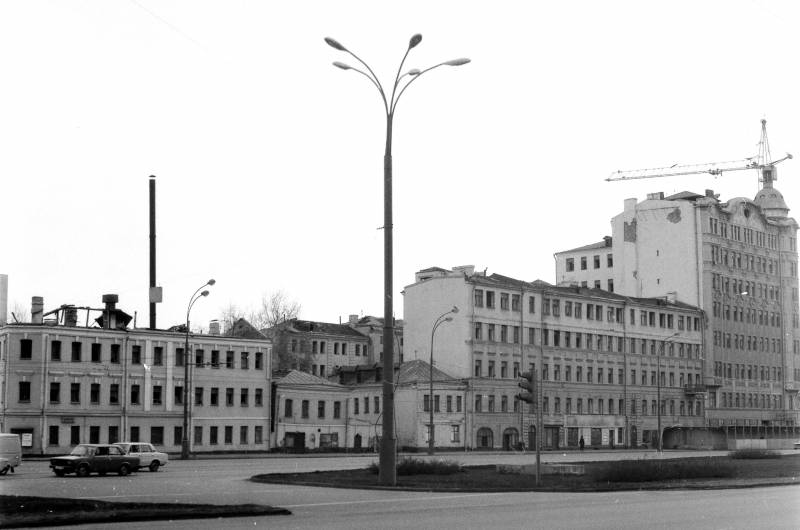
Previously, the local Tversky-Yamsky streets and lanes were enlivened by those who visited patients at the N. N. Burdenko Research Institute of Neurosurgery, and the embassy public, here the Czech and Slovak quarters are nearby. Now there are few patients, and many diplomats have moved out. In this regard, several nice pubs and cafes were closed not far from the Armory.
Not in the courtyards and the flow of the public, which moved from Tverskaya and Mayakovka to the Palace of Pioneers on Miusskaya Square. Students with Miuss - from Mendeleevka and RSUH in the direction of Mayakovka, and therefore - Arms Lane, almost never go. Much closer is the lively and cozy Novoslobodskaya metro station with a full range of shops and cheap, by capital standards, of course, cafes.
Information